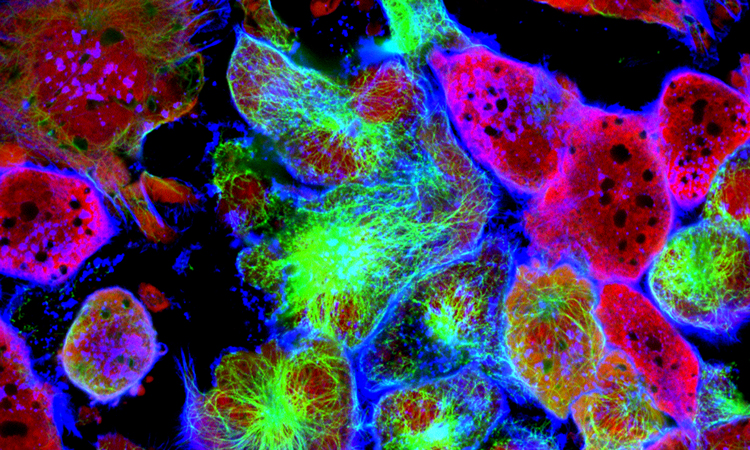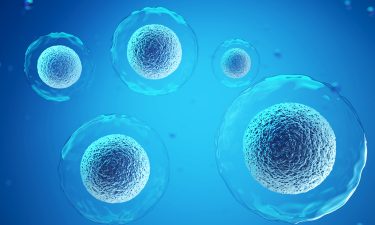Dr. Weeks’ Comment: To survive and thrive despite having a cancer process, you need to stop listening to your oncologist who is targeting your cancer TUMOR cells and begin to target the really dangerous cancer STEM cells. I have lectured on this important shift of focus for the past 10 years – watch this lecture Strike the Root to learn more about how cancer STEM cells are the more dangerous cancer cells compared to cancer TUMOR cells and how to remedy or reverse the effect of these dangerous cells. Only cancer STEM cells metastasize! Inflammation drives cancer – metastasis is an inflammatory process. Learn this and teach your oncologist this biochemical truth.
Five of the latest cancer stem cell discoveries
SOURCE https://www.drugtargetreview.com/article/54853/five-of-the-latest-cancer-stem-cell-discoveries/
Oncologic stem cells have been identified in many malignancies, and targeting these cells could help in the fight against cancer. Here are five of the most recent findings regarding cancer stem cells.

Scientists investigating oncologic processes may encounter cancer stem cells. These cells can induce a tumour to become more aggressive, but because of this also present as a potential drug target.
Here, Drug Target Review lists five of the most recent target discoveries relating to cancer stem cells, in order of their journal publication dates with the newest first.
1. Molecule with little toxicity reduces effects of cancer stem cells
Researchers found that SVC112, a molecule based on the chemical bouvardin, can combat head and neck cancer stem cells.1
…the team used SVC112 to treat head and neck tumours in mouse models, grown from samples of human tumours”
Previous studies have shown that bouvardin can slow a tumour’s ability to produce proteins that accelerate growth and metastasis. However, they often resist treatments like radiation and chemotherapy.
The study, conducted by scientists at SuviCa, synthesised SVC112 in order to control tumours effectively with little toxicity.
The group showed that the molecule acts specifically against proteins like Myc and Sox2, which are required by cancer stem cells, leaving healthy cells unharmed. They demonstrated this by comparing the effects of the drug in ‘matched pairs’ of cancer and healthy cells grown from samples donated by five head and neck cancer patients.
Next, the team used SVC112 to treat head and neck tumours in mouse models, grown from samples of human tumours. Earlier work showed that SVC112 sensitised previously radiation-resistant cancer stem cells to radiation treatment, so the group tested the molecule and radiation alone as well as in combination.
They found that when the population of stem cells was reduced to under one percent of the tumour cells, the tumour began to shrink. They concluded that the cancer stem cells act as controllers for the growth of tumours, so impairing this group of cells will slow down or stop the cancer.
The researchers hope that their pre-clinical results will lay the groundwork for human clinical trials of SVC112 in head and neck cancer patients.
2. Inhibiting progeny stem cells
Another study provided insight into a common type of cancer called gastric squamous-columnar junction cancer, or gastroesophageal cancer.2 The researchers identified a key pathway that they suggest provides a promising target for future study and therapy.
The team, from Cornell University, US, discovered that the progeny of Lgr5+ stem cells collects in large numbers and promotes cancer in areas where two types of stomach tissues meet.

To make their discovery, the researchers developed an experimental mouse model with two tumour suppressor genes that become inactivated under certain conditions. Using these mice and organoid models they revealed that instead of the Lgr5+ stem cells themselves being detected in high amounts in tumours, as previously thought, it was actually the Lgr5-CD44+ stem cell progeny cells that were found. These progeny cells were detected in the earliest discernible lesions and in advanced carcinomas.
The study also showed that the protein osteopontin, which binds to a receptor called CD44+, controls the balance between stem cells and differentiated cells. This complex also initiates the creation of more stem cells and others with stem cell properties such as Lgr5-CD44+ cells.
According to the researchers, the presence of osteopontin signalling keeps the newly differentiated progeny cells in an immature state. Examining samples from human patients, the researchers confirmed that lower levels of osteopontin and CD44+ correlated with better patient survival.
The team suggest testing osteopontin inhibitors and CD44+ antibodies as a possible way to prevent the build-up of Lgr5-CD44+ cells to treat gastric cancers.
3. A protein vital for leukaemic stem cell function is identified
A team of Australian researchers identified a new drug target for acute myeloid leukaemia (AML).3 The stem cells found in AML sustain the tumours and the researchers argue that they are likely the main cause of resistance to current anti-cancer therapies.
The team, led by researchers from the Peter MacCallum Cancer Centre, revealed that the protein HBO1 is essential for the survival of leukaemic stem cells. Tests in mouse models of human AML showed that when HBO1 is lost, these cells no longer drive cancer growth.
Using CRISPR domain screening and quantitative mass spectrometry, the researchers identified HBO1 as essential infacilitating the high expression of key genes that help to sustain the functional properties of leukaemic stem cells.
Deficiency of HBO1 caused the leukaemic stem cells to cease division, transition into less malignant forms and sometimes die, according to the researchers.
When the team developed a small molecule to suppress the activity of HBO1 in AML cells, they observed that this significantly induced anti-cancer effects, demonstrating the importance of the protein for the stem cells.
The team say they are now working to transition their discoveries to the clinic, where they can benefit patients.
4. Targeting cancer stem cell energy supply
A protein that drives the growth of pancreatic cancer and which could be a target for new treatments has been identified4 by researchers at the Crick Institute, UK.

Investigating pancreatic ductal adenocarcinoma, the researchers analysed a specific group of cancer stem cells.
Examining the gene expression of these cells, the team found that the CD9 protein is present on their surface both when the tumour is developing and when it is more established. The researchers suggest that this could be used as a marker to locate these cells.
However, the study also revealed that the protein is not just a marker of cancer stem cells but also makes their behaviour more malignant. Altering the amount of CD9 in tumour cells in mice revealed that reduced levels of the protein resulted in smaller tumours. Conversely, increasing the levels of CD9 made cancer cells more aggressive and able to form large tumours.
The team discovered that CD9 increases the rate at which cancer stem cells take up glutamine, an amino acid which helps to provide energy for the cancer to grow.
The researchers concluded that these cancer stem cells are vital to pancreatic cancer; even if only a few survive chemotherapy then tumours can regrow. Therefore, targeting CD9 could provide a therapeutic strategy for the condition, by cutting off the supply to glutamine and effectively starving the cancer.
5. Biomarker and drug target for cancer stem cells
A University of Houston College of Pharmacy, US study has revealed a new biomarker and drug-lead in cancer stem cells that governs cancer survival and spread.5 According to the researchers, their findings could lead to a drug discovery to kill cancer stem cells.
…plectin may prove to be a more common drug target than those currently used”
The team identified the structural protein plectin on the cells. Plectin is predominantly expressed intracellularly, but when translocated onto the cell surface, it is linked to tumour invasion and metastasis.
The researchers developed 400,000 potential synthetic chemical compounds called peptoids and used them to capture the specific biomarker performing on a unique two-colour cell screen. Only three peptoids targeted the cancer stem cells and not the remaining cancer cells from the same patient.
When the peptoids were used to pulldown their targets, one was revealed to be plectin, showing that there are both genotypic and phenotypic correlations between the protein and lung cancer stem cells. Furthermore, high plectin expression in patients was linked to poor survival rates, say the researchers, linking the protein even further.
According to the researchers, plectin may prove to be a more common drug target than those currently used. The group are now exploring the peptoid chemical compound that targets plectin as a potential drug-lead and drug delivery agent.
References
- Keysar S, Gomes N, et al. Inhibiting translation elongation with SVC112 suppresses cancer stem cells and inhibits growth in head and neck squamous carcinoma [Internet]. Cancer Research. 2020 [cited 15 January 2020]. Available from: https://cancerres.aacrjournals.org/content/early/2020/01/07/0008-5472.CAN-19-3232
- Fu D, Wang L, et al. Gastric squamous-columnar junction contains a large pool of cancer-prone immature osteopontin responsive Lgr5−CD44+ cells [Internet]. Nature Communicatoins. 2020 [cited 15 January 2020]. Available from: https://www.nature.com/articles/s41467-019-13847-2
- MacPherson L, Anokye, J, et al. HBO1 is required for the maintenance of leukaemia stem cells [Internet]. Nature. 2020 [cited 15 January 2020]. Available from: https://www.nature.com/articles/s41586-019-1835-6
- Wang V, Ferreira R, et al. CD9 identifies pancreatic cancer stem cells and modulates glutamine metabolism to fuel tumour growth [Internet]. Nature Cell Biology. 2020 [cited 15 January 2020]. Available from: https://www.nature.com/articles/s41556-019-0407-1
- Raymond A, Gao B, et al. Scientific Reports [Internet]. Unbiased peptoid combinatorial cell screen identifies plectin protein as a potential biomarker for lung cancer stem cells. 2020 [cited 15 January 2020]. Available from: https://www.nature.com/articles/s41598-019-51004-3
